RIP’S TALE — How the Shop Works
(References point to prototype plan above)
The “One Spot”
Here’s a description of how a One Spot, RIP track works. Let’s take a trip through the shop during a not so typical day, which just happens to be most days of the week. Today, as the new guy, you are assigned to the gang on 5 Track, working over the medium bad orders that the company has put over to your track. These cars need a little more love than the the typical, light, bad-order car carries (usually a pair of wheels, a bolt or two, and an air test).
Startin’ the Day
To make sure that you’re ready for the day’s assignment, you head to to your locker to get your personal protective equipment, or PPE. It consists of leather gloves, helmet, safety glasses and hearing protection, cutting jacket, coveralls, and steel toed boots.
You head out to the shop floor to find two decrepit, tired-looking coal cars spotted inside the shop with no bad order cards on them. This usually means a train crew found something obviously wrong with them, and instinctively shoved them in a spur, somewhere in the bowels of the yard, with the rest of the bad order cars.
After that track fills up, the morning switch crew gathers them up and swings them over to the 1 Track, so the foreman can figure out which cars are a priority to fix, and which ones can wait.
Sortin’ Junk from Loads
Sometime during yesterday’s shift, the foreman, who we affectionately call Tex, decided that these two coal cars sitting in front of you are just the biggest pieces of junk he’s seen since he got bumped off the Katy. Knowing 5 Track’s affection for breathing life into decaying cars, he directs swing shift to spot them up for you.
Now, not all cars are created equal. Some cars are natoriously “junk”. Others, that are practially brand new and haven’t even accumulated any graffitti, often come in for what the old timers would term “chicken [feed]” bad order, a minor repair that could have been performed in the yard.
Depending on the severity of the repair, and how hot the load is inside the car, the foreman will determine which track each car needs to go to. Typically the better equipped 2 & 3 Tracks will work on the hot loads, while 5 Track, the track you’re working on today and which has equipment reminiscent of the “good ole days”, will work on the cars that are not so much of a priority.
Movin’ Cars
During the day, the other tracks have been working light bad orders. Typically they will switch or move cars several times a day as they finish repairs, and today is no exception. After they move the cars, or “kick them out the door”, they pull some more off of the 1 Track and spot up two more cars in the shop to work on. Since 5 Track is the step-child of the organization, it does not have a car mover of its own, owing to its production (or lack thereof).
In order to properly upset the old-head working over on 2 Track, it’s your responsibility to “borrow” their car mover about five minutes before they need it. Please remember to leave it parked on 5 Track when you’re finished, for maximum effect.
Sometimes, on days when there is a loaded car deep in the cut of cars on the 1 Track, the foreman will call apon you and your partner to sort out the cars in front of the load and get that hot load over to 2 Track so that the old head can get it out before quitting time. In order to accomplish this task, some creative switching must take place.
(Continued in next column)
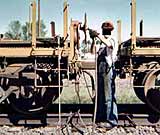

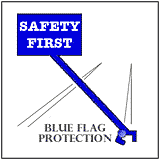
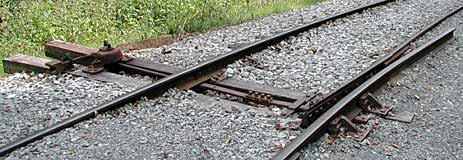
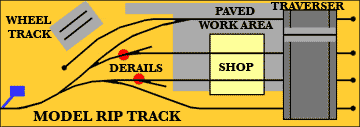
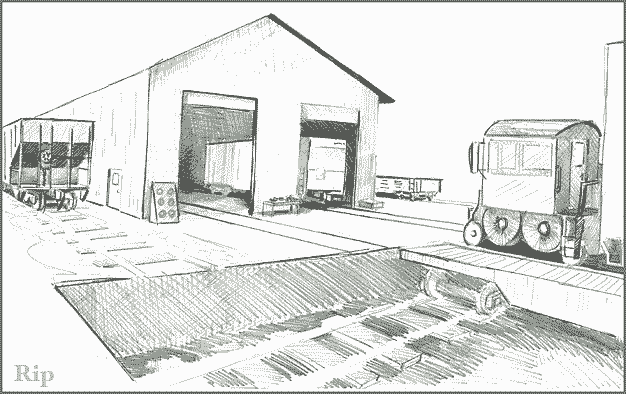

Leave a Reply